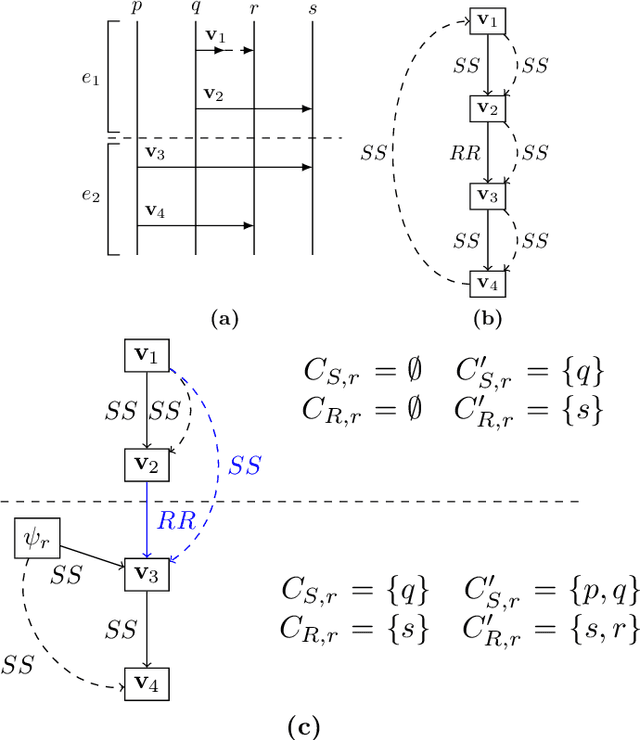Laetitia Laversa
C&A
A non-sequential hierarchy of message-passing models
Oct 24, 2022Abstract:There is a wide variety of message-passing communication models, ranging from synchronous ''rendez-vous'' communications to fully asynchronous/out-of-order communications. For large-scale distributed systems, the communication model is determined by the transport layer of the network, and a few classes of orders of message delivery (FIFO, causally ordered) have been identified in the early days of distributed computing. For local-scale message-passing applications, e.g., running on a single machine, the communication model may be determined by the actual implementation of message buffers and by how FIFO queues are used. While large-scale communication models, such as causal ordering, are defined by logical axioms, local-scale models are often defined by an operational semantics. In this work, we connect these two approaches, and we present a unified hierarchy of communication models encompassing both large-scale and local-scale models, based on their non-sequential behaviors. We also show that all the communication models we consider can be axiomatised in the monadic second order logic, and may therefore benefit from several bounded verification techniques based on bounded special treewidth. CCS Concepts: $\bullet$ Theory of computation $\rightarrow$ Verification by model checking; Modal and temporal logics; Distributed computing models.
On the k-synchronizability for mailbox systems
Sep 04, 2019



Abstract:Asynchronous bounded or unbounded message passing is ubiquitous in communication-centric systems. When modelling distributed scenarios, it is important to understand whether buffers are bounded or not. In this paper, we work on the notion of k-synchronizability: a system is k-synchronizable if any of its executions, up to reordering causally independent actions, can be divided into a succession of k-bounded interaction phases. We show two results: first, the reachability problem is decidable for k-synchronizable systems; second, the membership problem (whether a given system is k-synchronizable) is decidable as well. Our proofs fix several important issues in previous attempts to prove these two results.
 Add to Chrome
Add to Chrome Add to Firefox
Add to Firefox Add to Edge
Add to Edge